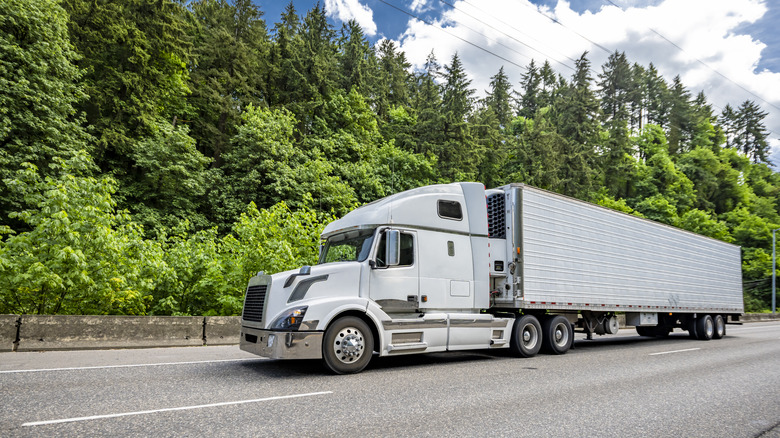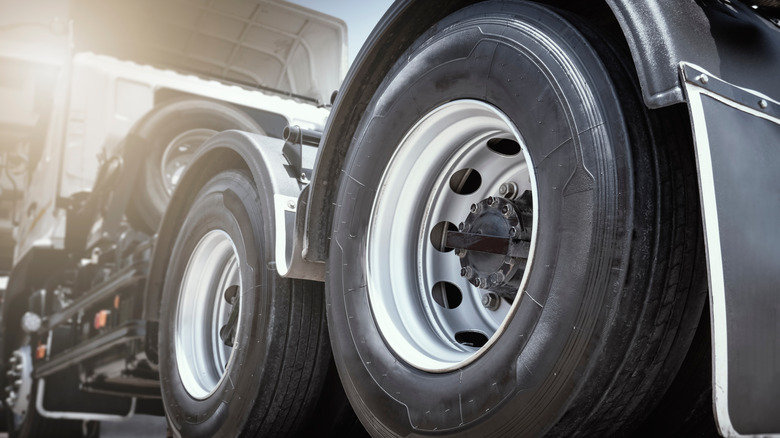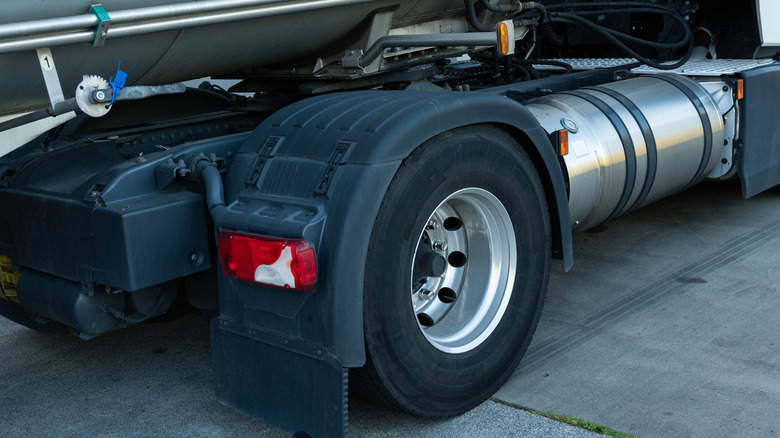Here's Why (Most) Semi-Trucks Are Rear-Wheel Drive
For massive semi-trucks that haul tens of thousands of pounds down highways every day, drivetrain isn't just a matter of choice. Rear-wheel drive (RWD) is the backbone of the trucking industry for a reason, and it all boils down to physics. When a semi accelerates, weight shifts to the rear. That's why the rear wheels do the driving: It boosts the semi-truck's traction where it's needed most. This is especially important on dry, paved roads where semis do most of their driving.
RWD trucks handle better under acceleration and have improved balance, all thanks to better weight distribution between the front and rear. Unlike front-wheel drive (FWD) systems, which can struggle to gain traction while hauling heavy loads because of less weight on the drive wheels, RWD configurations let the truck push itself forward with more stability and confidence. This setup is key to the two-wheel-drive configurations found on most long-haul rigs.
Different axle configurations under the RWD umbrella
While most semis are RWD, not all have the same axle configurations. Two of the most popular setups are the 6x4 and 6x2. A 6x4 configuration gives power to both rear axles. It's ideal for off-road conditions, steep inclines, or inclement weather. The extra traction provided by two powered axles helps make sure the truck can keep moving even on loose or slippery terrain. Of course, there are trade-offs: more weight, more rolling resistance, and less fuel efficiency.
That's where the 6x2 configuration differs. In this setup, only one of the rear axles receives power. While this may sound like a downgrade in capability, it actually serves a useful purpose: For trucks that stick to well-maintained roads with moderate grades, 6x2 can be the smarter choice. These trucks get less rolling resistance and weigh less overall, giving drivers a 2.5% boost in fuel economy on average. Over thousands of miles, that adds up to serious savings for both owner-operators and fleet managers alike.
How drivetrain factors into the rear-wheel drive decision
The mechanics of a truck's driveline also explain the industry's preference for rear-wheel drive. The driveline includes the clutch, axle, yoke, driveshaft, universal joints, and differential, all of which work together to move power from the engine to the wheels. In rear-wheel-drive trucks, the driveshaft connects the transmission to the differential located between the rear wheels — providing efficient energy transfer to the point of traction.
While this setup does require more complex components (like a rear differential and driveshaft), it lets each part perform its duty without overloading any single element. The front wheels are free to steer while the rear wheels do the heavy lifting. And because semi-trucks typically don't need tons of interior cabin space the same way passenger vehicles do, the bulky undercarriage components required for RWD aren't a serious drawback.
RWD systems are also easier to maintain in the long run compared to more complex AWD or 4WD systems. Plus, advanced technologies like antilock braking systems (ABS) and traction control have only made RWD even more practical for the vast majority of semi-trucks. While semi drivetrain configurations will surely continue to evolve in the years to come, the current reign of RWD makes perfect sense.


